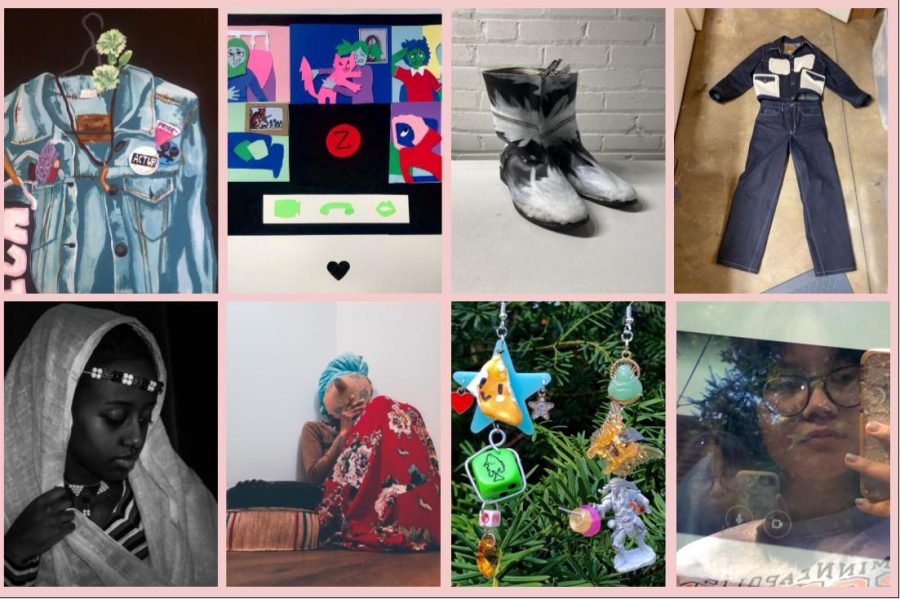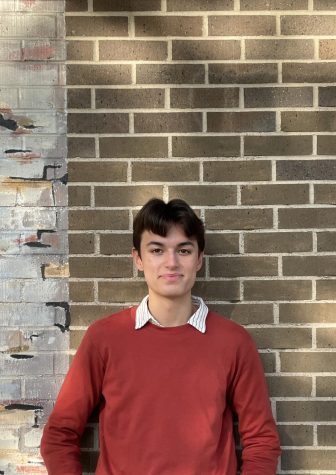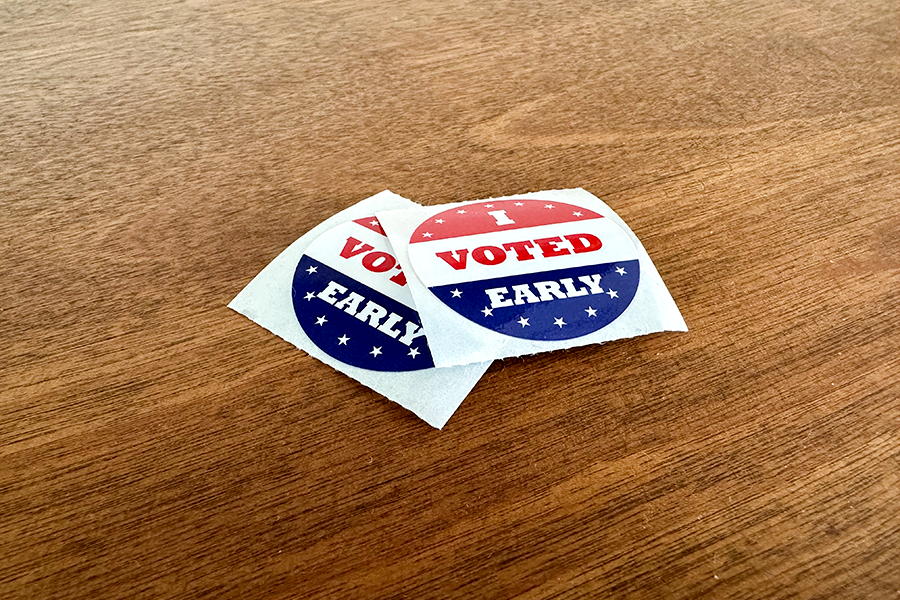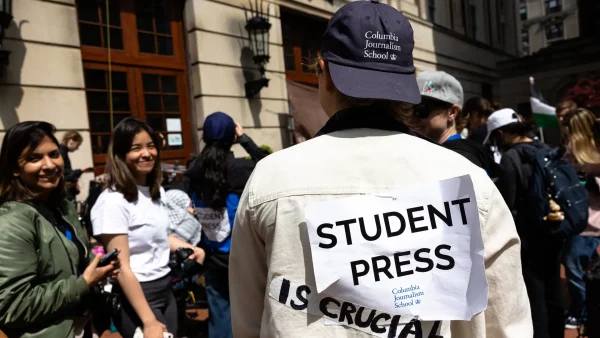The incredible art of South’s AP Art and Advanced Art classes
March 6, 2021
One of the perks of being a student at South High school is the wide variety of unique elective courses. You can take electives like guitar and photoshop, as well as dance and ethnic studies. Some of the electives are even college leveled classes, providing a valuable experience for those who take them.
Two of the more advanced electives that South offers are Ms. Berger’s Advanced Art and AP Art and Design classes. According to Berger, Advanced Art is a class that focuses on the process of making art and is not your typical art class. “My focus is on students developing their artistic voice through working on art processes and conceptual ways of working… As an art teacher, I am most excited when my students are discovering new things and when they are excited about their work.”
AP Art and Design is a college level art course. Formerly known as AP Studio Art, each student taking the course creates art based on a theme or concept throughout the year. Berger says the class “is not an independent study,” but the students have the freedom to choose which themes and concepts they wish to explore. Over the year, students in AP Art have created paintings, collages, drawings, taken photographs, and even designed clothes, all relating to their chosen themes.
This article will look at work that students from both classes have created, as well as see what inspires them, what their favorite mediums are, and more.
Mia Lambert, Advanced Art
One of the students in Advanced Art is sophomore Mia Lambert. Lambert taught herself to draw from watching cartoons, anime, and Youtube. Now as a student in South’s advanced art class, one thing she wants to learn is storytelling through art and emotional art. “Currently, I’d describe my art as little messy collections of myself, things I like, and how I see the world around me. I really love using digital art, which I picked up after watching speed-paint videos and drawing live streams [that] I’ve been watching since I was younger. I also really love using acrylic paint, jewelry making at times, and of course the classic pencil and pen,” said Lambert.
Lambert has gotten into digital art the last few years, an art form that is now familiar to her. While she has grown comfortable with digital art, she also has branched out to try different art forms over the past year. “One of my favorite pieces however was an earring piece that was my self portrait in the very beginning of the year titled ‘I’m all ears’. I’d call myself an earring collector for a few years now, so I wanted to mix my love for jewelry with my love for creating and expression,” said Lambert.
Izzy Spiess, Advanced Art
Izzy Spiess is now a senior at South. They have really enjoyed Advanced Art this year, and recommend the class to anyone who has the time to take it. A free and intimate painter and illustrator, Spiess enjoys creating art to represent queer feelings, experiences, and bodies. “I really like painting about queer experiences, and queer love… [it’s] really important to me to paint queer bodies and minds and share that with people,” said Spiess.
Spiess’s favorite mediums to use are watercolors and acrylic paint, but like Lambert, they have branched out to exploring new art forms. “I’ve enjoyed projecting things onto walls recently, and taking photographs, and doing comic books, and I stepped a toe into digital art [as well],” said Spiess.
Overall, Advanced Art has worked on quite the collection of different art forms this year. They have worked on art spanning from photography to embroidery. One project the students did was creating fluxus boxes, an art form where you focus on making art for the experience. Another project tackled relational aesthetics, a collaborative art form in which the students asked each other to do small tasks such as doodle to music, help create a “mood board,” and even just scribble. The class also did more traditional forms of art, such as still life paintings.
Beza Abate, AP Art and Design
Despite how many people have easy access to a camera nowadays, it is more difficult than most think to take a good picture! Beza Abate, a senior in AP Art, is an experienced photographer, and she has decided to fully embrace the art form for the rest of the semester. “[For] second semester I decided to just focus on photography because I feel like that’s my strength in a way, my photography [is] my favorite artwork… there’s a lot of elements and lighting and angles… [required] to pursue or show a different kind of meaning than usual,” said Abate.
The theme that Abate is exploring is one’s motherland, both the beauty and pain of what happens and has happened there. “I like to do [art styles] that relate to my experiences. My question was how I could explore and show the beauty, culture, tradition, and also the struggles within my motherland, which is Ethiopia… and [also to be] able to address… the culture as well as the devastating events that are going on right now, so, yeah I’m trying to answer that,” said Abate.
Abate appreciates how you can do any kind of art in AP Art and Design. “It’s not really limited to who knows how to paint and draw, you can do whatever you want as long as it’s part of art, which is creativity. That’s all we need,” said Abate.
Andrew Lock, AP Art and Design
Andrew Lock was around seven or eight years old when they learned how to sew, and now, as a senior in high school, they are designing clothes. It was about three years ago when Lock got into designing clothes, and now they create from scratch. “The way I started out was by taking apart old clothes and that kind of helped me gain an understanding of how they work, how they are put together, and then I would just trace out patterns from the pieces of those clothes I cut out and put together my own, and as I kept going I’ve come to the point now where I can just take measurements, and or go from measurements and create something that fits pretty well most of the time,” said Lock.
Lock is investigating class consciousness for their theme, which they are representing through the clothes they create. Lock questions why we must stick to the status quo, and explores things from the effects of capitalism and overworking to working class resilience, something he hopes to cover in his next piece. “I’ve just been gathering materials for it so far, but it’s going to be a look that kind of represents the resilience of the working class, but also the decay of the current system and how it’s self-destructive… [it will be] a trench coat… [patched with] sashiko stitching,” said Lock.
They continued, “Sashiko stitching was a technique born out of rural Japan in the 1300s, when… a field worker would get a hole in their coat or something, they would throw a tiny patch of fabric and stitch over it. It’s super prominent straight stitches, and [if] over time you do that, it would create a Boro piece, something that’s been repaired over and over again. I’m using that metaphor and the significance of Boro because I feel like Boro kind of represents working class resilience really well, because it was working class Japanese people that developed that technique. So just using that and also using this super destroyed [and] distressed but repaired trench coat to represent the failures of the current system.”






